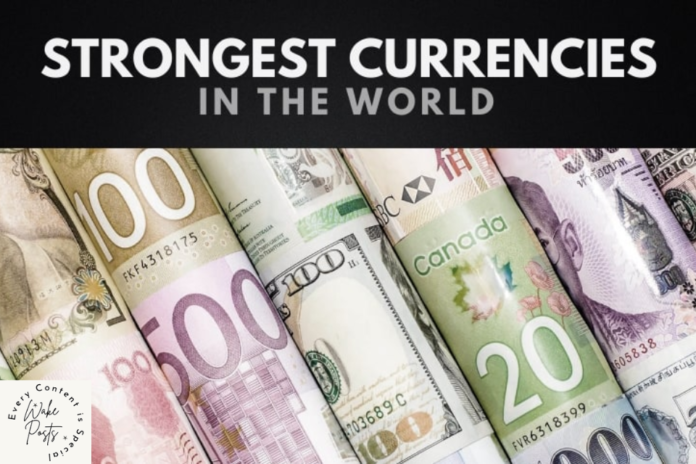Money is a strange thing. It’s only worth what we all agree it’s worth. Yet, whole economies may grow and decline in response to market whims. That was undoubtedly the case in 2020 when the COVID-19 epidemic shook the world economy. One may anticipate that the most valued currencies in the world would lose value in the face of such uncertainty.
Strength in this context, though, relates to value, and as you’ll see in this article, several currencies are valued significantly higher than the U.S. dollar and the pound sterling. It’s essential to consider how currency strength is calculated. The number of goods and services that may be purchased and the amount of foreign money obtained in return for one unit of the local currency are used to determine the strength of a currency.
Money is what keeps the world turning. It is the primary indicator of wealth and the means through which international trade is facilitated. Bartering for goods and services gave way to paper money long ago. The complexity of the world’s financial systems incorporates the significance of trade and value.
What causes a currency to be robust?
The amount of foreign cash that can be exchanged for one unit of a given currency, as well as inflation, economic growth, and other factors, all affect how strong a currency is.
Due to its widespread use on overseas markets and substantial reserves held by foreign institutions, the U.S. Dollar is frequently utilized as the fixed base currency. 90% of all forex trading and over 60% of all central bank reserves worldwide are denominated in U.S. dollars.
The U.S. Dollar is more influential than other currencies, not stronger than them, despite its relative ownership. Even though the Japanese Yen (JPY) is only worth around one cent compared to the U.S. dollar, it is regarded as one of the world’s most powerful and stable currencies.
It’s vital to remember that a strong currency does not necessarily indicate a thriving economy. To accurately assess a currency’s strength, you must assess several variables, such as supply, demand, inflation, and price fluctuations over an extended period of time.
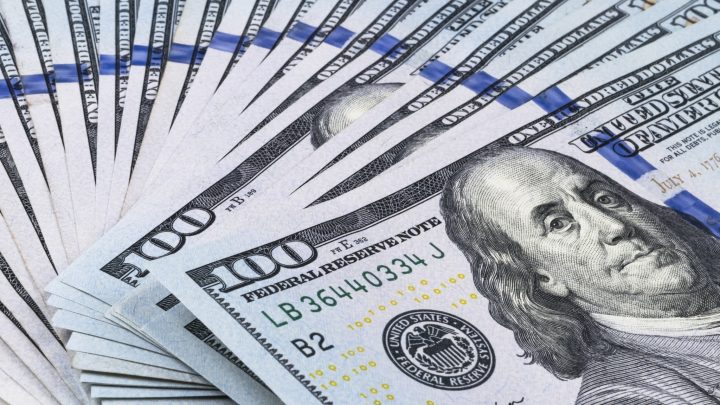
20 World’s Strongest Currencies
Knowing the values of the most valuable currencies in the world is essential since they come in handy in various situations. It seems simpler and easier to convert the local currency to the one with the highest global value before converting it to the local currency of the nation you are traveling to when it comes to travel and tourism to any other country. Compared to doing so using your own country’s currency, this ensures a profitable exchange rate. Most Indian visitors to nations like Thailand, Singapore, Malaysia, and others adhere to this norm, converting INR to dollars before exchanging them for local currency in that destination.
Many think the U.S. dollar and the British pound are the world’s longest and most influential currencies. This is untrue, though, as several currencies have greater conversion rates than the U.S. dollar and the British pound.
The top 20 currencies in the world relative to the U.S. dollar as of July 2022 are shown below.
1. KWD, or Kuwaiti Dinar
The strongest currency in the world, currently holding the top spot, is the Kuwaiti dinar. When Kuwait obtained independence from the British Empire in 1960, the Kuwaiti Dinar was originally introduced and equaled one pound.
Kuwait is a physically situated country between Saudi Arabia and Iraq that is generally extremely tiny. With a KWD to the USD exchange rate of $3.257, one USD will only get you 0.306 Kuwaiti Dinars.
According to the wiki, Kuwait is an oil-rich nation with a stable economy and 9% of the world’s oil reserves situated on its soil. Hence its currency has the highest value. Nearly 95% of Kuwait’s revenue comes from oil exports, which are its main source of income.
Compared to other nations, Kuwait has the easiest and lowest cost of manufacturing petroleum products. The fact that Kuwait is tax-free and has a relatively low unemployment rate is intriguing about the nation. Kuwait is ranked eighth on the list of nations with the greatest GDP per capita.
2. Bahraini Dinar: BHD
The Bahraini Dinar (BHD) is ranked second among the world’s most valued currencies. The BHD exchange rate is $2.659 to the dinar, meaning that for every Dollar you trade, you will receive 0.37 BHD.
In 1965, BHD switched from utilizing the Gulf Rupee as legal money to the Bahraini Dinar. Due to the peg between BHD and the USD, there has been reduced volatility and general stability since 1987.
A million people or so people live in Bahrain. Like Kuwait, the export of gas and petroleum products is this island nation’s main source of income.
Bahrain, one of the top oil-producing nations, made most of its money from the pearl business. However, because of pearl farming in Japan, the output ceased in the 1930s.
One of the interesting aspects is that Bahrain has officially recognized the Riyal as legal cash. One dinar is equal to 10 riyals at the current exchange rate.
3. Omani Rial: OMR
The Omani Rial is the third-most costly currency in the world. One Rial is equivalent to 2.60 OMR at the current exchange rate.
As Saidi Rial, the Omani Rial was first established in 1970 and was named after the House of Al Said, the sultanate of Oman. OMR and the U.S. dollar have been paired since 1973.
Due to the great purchasing power of the Omani Rial, the government of Oman has created 1/4 and 1/2 Rial banknotes. Oman is an oil-rich nation, and like other gulf countries in the Middle East, it has a sophisticated economy and a high living level.
As oil supplies are rapidly running out, the government of Oman has decided to diversify its economy away from crude oil production and towards other fields such as metallurgy, gas production development, and tourism.
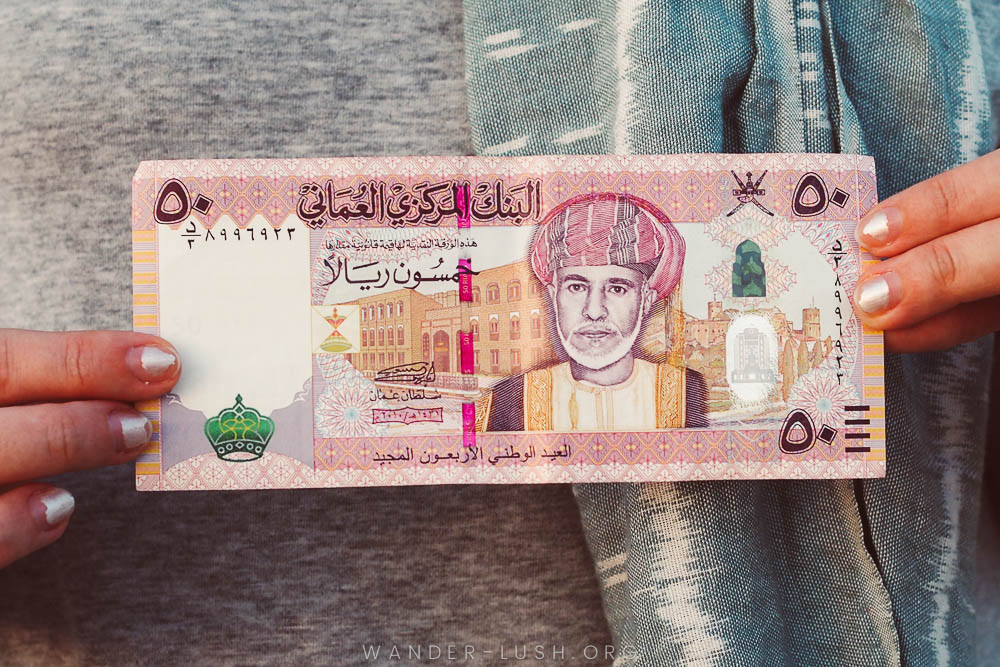
4. Jordanian Dinar: JOD
With a conversion rate of 1 JOD = 1.41 USD, the Jordanian Dinar, which has been the official currency of Jordan since 1950, is ranked fourth on our list of the strongest currency in the world.
Although it was initially linked to the U.S. Dollar at a greater rate, the nation has successfully maintained its peg for the past 20 years.
Since Jordan is a developing market with limited economic development, there is no fundamental premise to support its high valuation. In addition to lacking natural resources like coal and oil, Jordan also owes a sizable amount to its creditors.
Since 2011, Jordan’s economy has grown less quickly due to a significant increase in population, external debt, and unemployment.
5. Cayman Islands Dollar: KYD
Only the Cayman Islands Dollar, which ranks fifth on our list of strong currencies, is a currency from the Caribbean. This is mostly because it is a British overseas territory and is regarded as one of the world’s top corporate and individual tax havens.
The Cayman Islands, one of the top five largest offshore financial hubs, has a conversion rate of 1 KYD = 1.22 USD. The nation grants numerous banks, hedge funds, and insurance organizations licenses to establish businesses.
6. British Pound: GBP
The British pound sterling, with a conversion rate of 1 GBP = 1.215 USD, is the sixth-strongest currency in the world. Despite popular belief, the British pound does not have the highest monetary worth.
Before World War I, the GBP was the earliest currency in use when the British Empire was dispersed worldwide.
One of the most widely traded currencies worldwide is the pound. The third-most traded pair in the forex market after the EUR and JPY is the GBP/USD pair, also referred to as “the cable” by traders.
The Pound Sterling serves as the currency of Scotland, Wales, Northern Ireland, and England. In Guernsey, Jersey, and the Isle of Man, three British Crown Dependencies, GBP is used as a second currency.
Several former British colonies, like the Falkland Islands, Gibraltar, and Saint Helena, have distinct currencies. These paper currencies are unlike those produced by the Bank of England regarding physical appearance.
7. European Euro: EUR
With a conversion rate of 1.042 to the Dollar, the Euro comes in at number seven on our list of the strongest currency in the world. The EURO is the recognized currency in 19 European nations.
The second reserve currency after the U.S. dollar is the Euro, which controls 25% of global savings. Approximately 25 nations have fixed-rate currency pegs to the Euro.
The most often traded currency pair—also known as “Fiber”—is the EUR/USD pair, which amounts to more than 25% of daily volume. Another brag is that, behind the U.S. Dollar, the Euro is the second most traded currency.
8. Swiss Franc: CHF
With a conversion rate of 1.091 to the Dollar, the Swiss Franc comes in at number eight on our list of the best currencies. The CHF is one of the most stable and least impacted by inflation currencies.
One of the richest nations in the world, Switzerland has a strict monetary policy and low inflation rates. This is one of the main reasons investors should feel safe while trading or keeping cash.
9. U.S. Dollar
Following the Breton Woods Accord, the U.S. Dollar has been the “World Reserve Currency” since 1944. The most actively traded currency on the forex market is the U.S. dollar.
Due to its widespread acceptance, the USD is constantly in great demand. More than 85% of all daily forex deals involve the USD. The world’s economic engine is the United States, which has a GDP of more than 22 trillion dollars. As of September 2018, there are 1.69 trillion USD in circulation. Only 30% of the country’s money is now in use.
In the past, US banks produced bills with face values of $1,000, $5,000, $10,000, and $100,000.
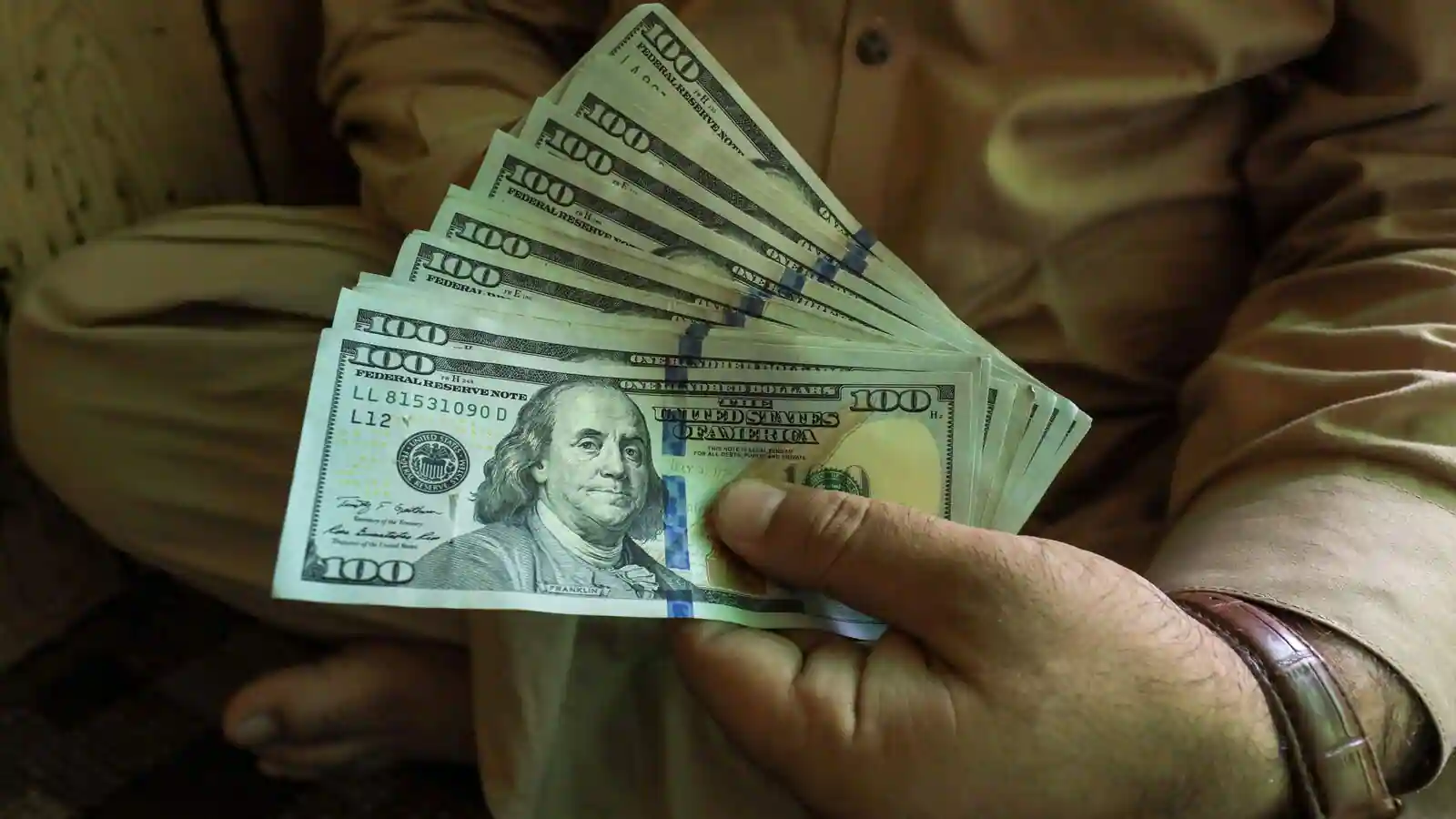
10. Bahamian Dollar: BSD
Since 1966, BSD has served as The Bahamas’ national currency. BSD and USD are tied at par.
For the convenience of American travelers, many firms that serve the tourism sector keep some additional U.S. dollars on hand.
11. Bermudian Dollar: BMD
The BMD is the legal tender of Bermuda, a British Overseas Territory. BMD is fixed at a 1:1 ratio to USD. 100 BMD is the highest note currently in use.
Outside of Bermuda, trading in the Bermuda dollar is prohibited. In Bermuda, one may get both USD and BMD bills.
12. Panamanian Balboa: PAB
Along with the USD, the Panamanian Balboa serves as the country of Panama’s official currency. Additionally, PAB is equalized to USD. The Spanish adventurer Vasco Nez de Balboa is honored with the name Balboa.
When Panama became independent in 1906, the Colombian Peso was replaced by the Balboa. It’s noteworthy that Panama has never had a central bank that the government recognized.
13. Canadian Dollar: CAD
With a conversion rate of 0.778 to the U.S. dollar, the Canadian Dollar serves as Canada’s official reserve currency. The fifth-largest reserve currency is CAD.
Just after Saudi Arabia and Venezuela in terms of crude oil reserves, Canada is home to the second-largest uranium supply in the world.
14. Singapore Dollar: SGD
With a conversion rate of 0.717 to the USD, the Singapore Dollar is one of the strongest currencies in the APAC area.
The S$10,000 banknote the Singaporean government released was the most precious one in existence. But they decided to halt printing and started the withdrawal process in 2014.
15. Brunei Dollar: BND
Due to a currency agreement between Singapore and Brunei, the conversion rate between the Brunei Dollar and SGD is the same. The two currencies, SGD and BND, are convertible at par and accepted in Singapore and Brunei.
With a net worth estimated at $28 billion, the Sultan of Brunei is the richest monarch in the world.
16. Australian Dollar: AUD
In Australia and a few Pacific island nations, the Australian Dollar serves as official legal money. It is regarded as one of the stable currencies, with a conversion rate of 0.688 to the U.S. dollar.
Regarding daily traded volume, 6.8% of the forex market, AUD is the fifth most traded currency.
17. New Zealand Dollar: NZD
Along with New Zealand, the Cook Islands, Niue, Tokelau, and the Pitcairn Islands also use the New Zealand Dollar as their official currency.
It is colloquially known as “Kiwi” or “Kiwi dollar” in forex lingo. NZD to USD exchanges for 0.624 at current rates.
The NZD was first issued in 1967. The New Zealand dollar is the tenth most traded currency worldwide. It contributes 2.1% of the daily amount of foreign exchange.
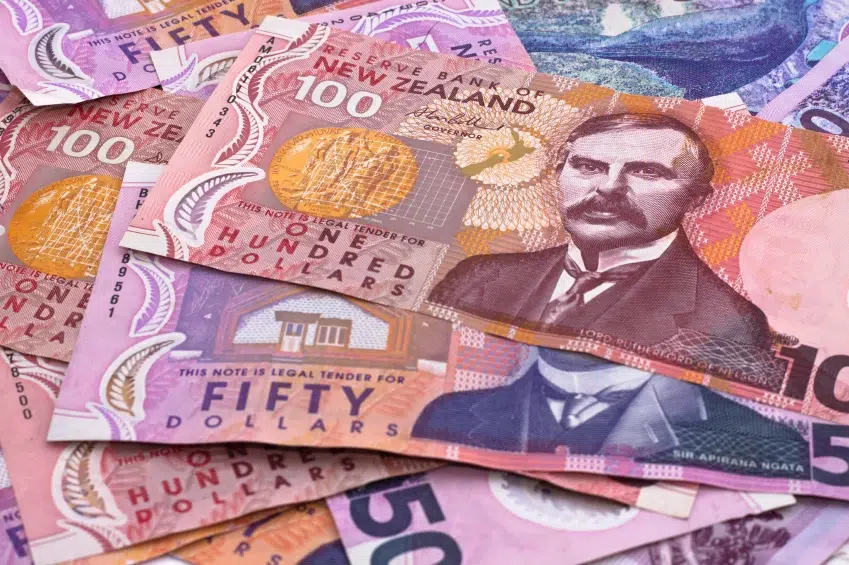
18. Bulgarian Lev: BGN
The national currency of Bulgaria is the Bulgarian Lev, which currently exchanges for 0.534 US dollars. In 1997, BGN and Deutsche Mark initially engaged in a fixed-rate currency board agreement.
Following the launch of the Euro, it was linked to the EUR at a rate of BGN 1.95583: EUR
19. Fijian Dollar: FJD
The exchange rate of the Fijian Dollar against the U.S. dollar has historically been 0.454. It was first used in 1969 to replace the Fijian pound at a conversion rate of 1 pound to 2 dollars.
Despite becoming independent from the British in 1970, Queen Elizabeth II was still depicted on coins and banknotes up until 2013. Later, images of flora and animals took their place.
20. Brazil Real: BRL
Brazil’s national currency, the Brazilian Real, now exchanges for 0.187 of a dollar. BRL was first released in 1994.
In our world’s strongest currencies, BRL is ranked last at position 20. One of the world’s top exporters of raw resources is Brazil.
Now let’s take a closer look at the variables determining the strongest currency in the world. Keep an eye on the things mentioned in the list below if you want to monitor the ups and downs fluctuations of your preferred currencies and comprehend why these things occur:
Factors that affect a currency’s value
-
Inflation
Currency rates vary due to changes in market inflation. The exchange rate will rise in a nation with lower inflation than it will decline in a nation with greater inflation.
-
Interest rates
Changes in interest rates also have an impact on currency values. A country’s currency value increases when interest rates rise, and the opposite is also true. Inflation and interest rates are connected.
-
National Debt
Government debt is all of the debt that a whole nation owes. High debt levels make a country less likely to attract foreign investments, which might increase inflation and weaken the currency.
-
Political Stability
A nation with strong political and economic stability is more likely to draw investors, boosting foreign capital and raising the currency’s value. A continual decline in currency value is observed in nations with shaky governments.
-
Recession
The economic downfall of a nation is a recession. Falling interest rates would make it more difficult for a country in recession to attract foreign investment.
Different currencies have varying values.
In the United States, a Snickers bar could cost you $1, while in Indonesia, it might cost you a huge rupiahs amount. Does that imply that a chocolate bar costs higher in Indonesia than it does in the U.S.? No, it costs about the same when converted from rupiah to dollars.
So who establishes the value of a currency? For a select few nations, it’s rather simple: these nations choose a widely used currency, often the U.S. dollar or the euro, and “peg” the exchange rate of their currency to this currency. For instance, Belize’s central bank determined that its currency’s value would equal half a dollar. They are referred to as fixed or pegged currencies. Countries often peg their currencies to ensure stability for investors who don’t want to worry about changes in the currency’s value. For instance, the investment’s worth would decrease if the value of a currency decreased.
Advantages of a Strong Currency
Sadly, no government is prepared to make this long-term decision at the expense of potential short-term threats.
But if people see the advantages of a stronger currency, the government will likely be inspired to make changes. A few advantages of a stronger currency are as follows:
Cheaper Imports: When a country’s currency is strong, it may import higher-quality goods and services at a lower price (compared to domestic prices). This has the potential to lower the cost of products and services significantly.
Low Inflation: Because residents can access affordable (but high-quality) imported products and services, inflation is always low and under control.
High Purchasing Power: People feel more affluent when their currency is stronger. Let’s say a trip within the USA will cost $10,000. When translated to INR, that money would equal Rs. 8,00,000 (at an Rs. 80/USD exchange rate). With this money, an American might take a luxury trip to India. Similarly, using USD when purchasing in India might result in far greater happiness.
High demand for currency will increase for a strong currency supported by controlled inflation, rapid GDP growth, and high employment rates. In the future, a currency in high demand may become a “global currency.”
Cheap Debt: The government is a prime example of this. Foreign investors buy government bonds due to the strong and stable currency (like in US T.bills). High-interest rates are not desired for these investments. Even if interest rates are low, they will still buy bonds. Why? They keep their money in currencies with strong pegs (like USD). Due to the huge demand, the currency will eventually fetch bigger profits as the exchange rate rises.
Summary
The foreign currency market is very erratic, with rates that shift often. The promise of change is the only constant.
The joy of investing in this market is sparked by the volatility of currency values, which are constantly changing.
In conclusion, it is clear from the list of the strongest currencies in the world – and what it takes for them to get there – that everything is in the hands of top-level authorities. The central banks’ monetary policies and the management overseeing the institutions in place determine whether a currency rises or falls. Any currency, regardless of its type, is worth more when it is strong and stable, which is true regardless of what money it is.
Political and economic stability, high-interest rates, low inflation, well-planned monetary policies, and cheap pricing to entice nations with more buying power are the variables that increase a currency’s monetary worth.

